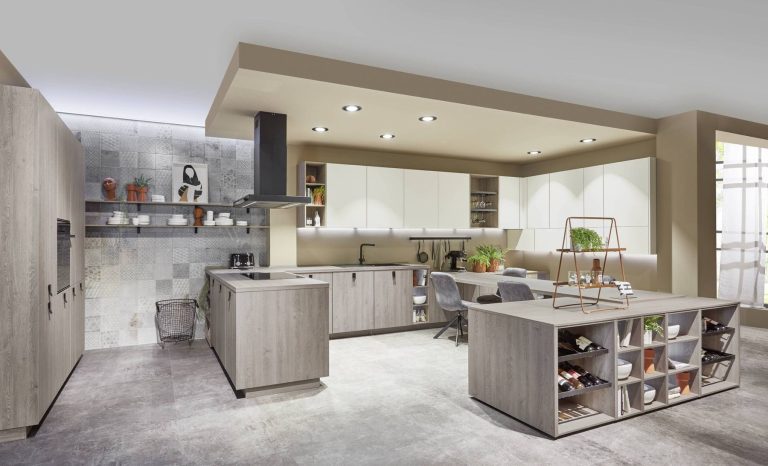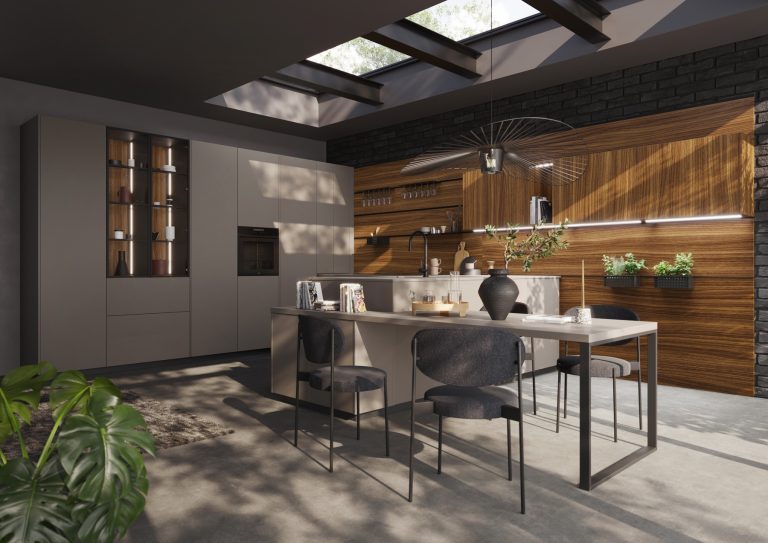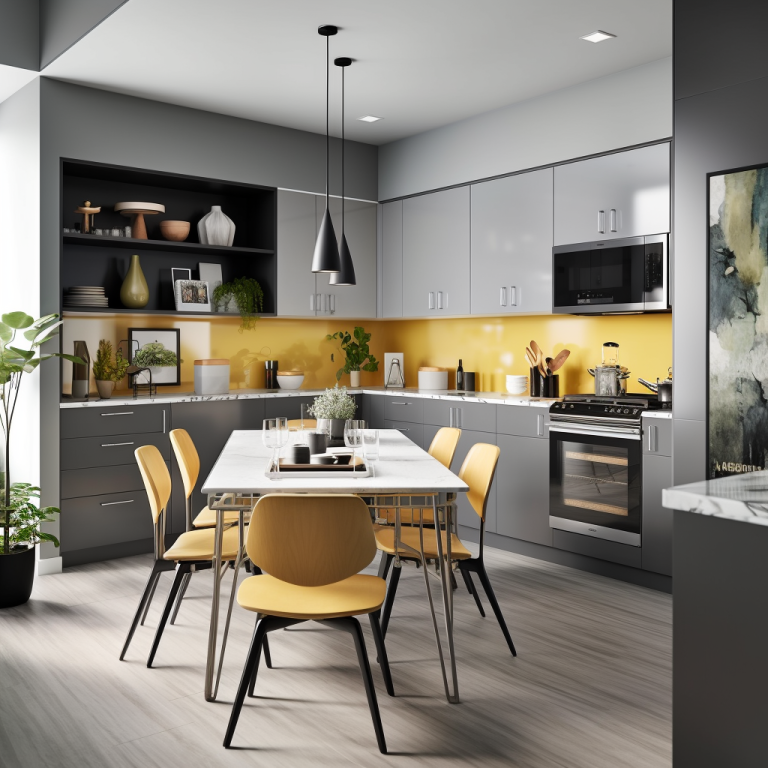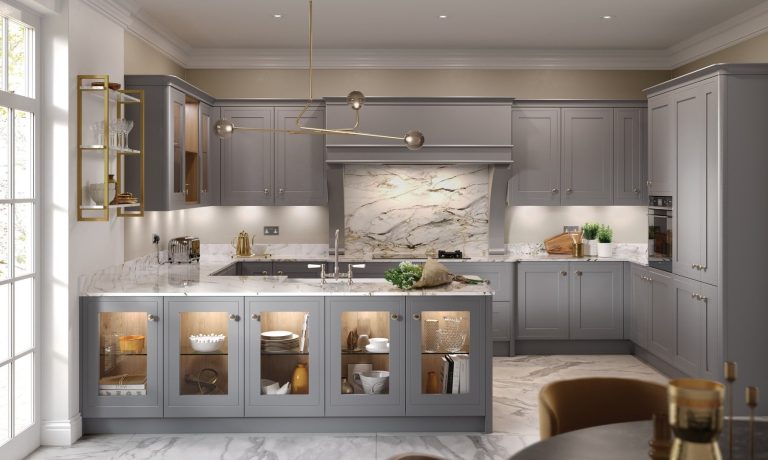White And Grey Kitchen Ideas
White And Grey Kitchen Ideas
The kitchen, often considered the heart of the home, is a space where both functionality and aesthetics play a crucial role in creating an inviting and efficient environment.
When considering a colour scheme for this essential space, the timeless combination of white and grey offers a harmonious blend that can be both visually appealing and practical.
This duo of hues possesses the ability to create a sense of spaciousness and cleanliness while providing a neutral backdrop to showcase personal style and decorative elements.
In order to achieve the perfect white and grey kitchen, several factors must be taken into consideration, including the selection of materials and finishes, incorporation of creative lighting solutions, and balancing functionality with aesthetics.
Additionally, adding personal touches and decorative elements can further enhance the overall design, ensuring a space that reflects individual tastes and preferences.
This article will provide a comprehensive guide to creating an exquisite white and grey kitchen, exploring various ideas and inspirations to help craft a space that is both beautiful and practical.
Choosing the Perfect Color Combination
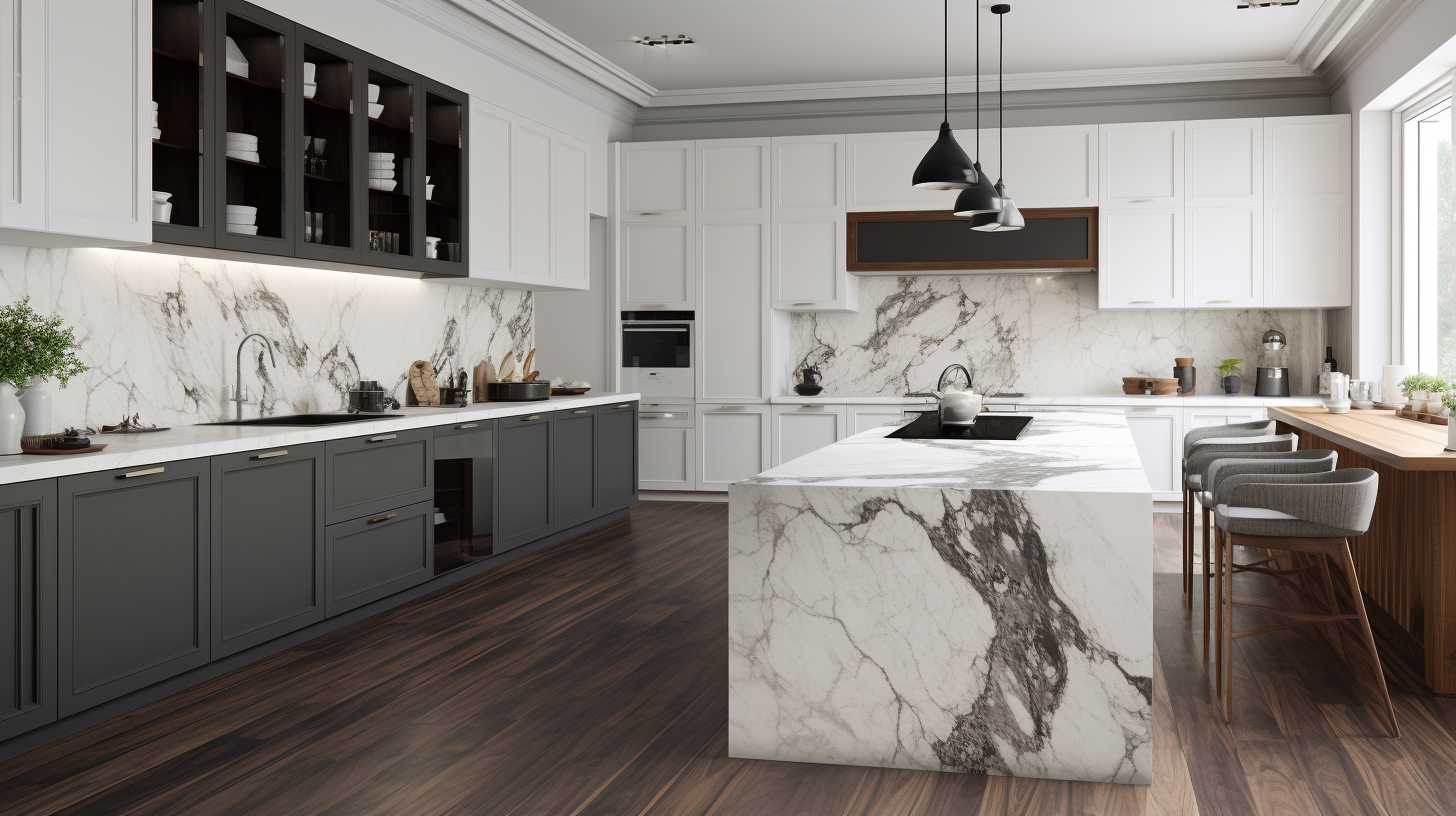
Selecting the ideal colour scheme is crucial in creating a harmonious and visually appealing space that reflects one’s personal style and preferences. In the context of white and grey kitchen ideas, homeowners and designers must carefully consider the various shades and tones of these colours, as well as their impact on the overall ambiance of the space. Factors such as lighting, architectural elements, and the intended function of the kitchen should also be taken into account when determining the perfect balance between white and grey.
Furthermore, incorporating complementary or contrasting colours can enhance the visual interest of the space, resulting in a more sophisticated and cohesive design.
An essential aspect of choosing the perfect colour combination for a white and grey kitchen is understanding the nuances of these colors and how they interact with one another. White, for example, can range from stark and cool to warm and creamy, while grey can be anything from a light, silvery hue to a deep, charcoal shade. The interplay between these colours can significantly impact the mood and atmosphere of the kitchen, with lighter shades creating a more open and airy feel, while darker tones can evoke a sense of warmth and intimacy.
Additionally, the introduction of accent colours, such as metallics, natural wood tones, or even pops of bold, vibrant hues, can further elevate the design and add depth, texture, and character to the space.
Ultimately, the key to achieving an appealing and harmonious white and grey kitchen lies in the meticulous consideration of colour, tone, and contrast, resulting in a space that is both functional and aesthetically pleasing.
Selecting the Right Materials and Finishes

Careful consideration of materials and finishes is crucial in creating a harmonious and timeless space that expertly blends functionality with aesthetic appeal. In a white and grey kitchen, the choice of materials will play a significant role in setting the mood and atmosphere, as well as determining the overall durability and ease of maintenance.
When selecting materials for countertops, cabinetry, and flooring, it is essential to consider factors such as resistance to stains, scratches, and moisture, as well as the ability to withstand daily wear and tear. Popular options for white and grey kitchens include materials such as quartz, granite, marble, and engineered stone for countertops, painted or lacquered wood for cabinetry, and porcelain, ceramic, or natural stone for flooring. Each material has its unique set of properties, and it is important to carefully weigh the pros and cons before making a decision.
The finishes applied to the chosen materials can significantly impact the overall look and feel of the white and grey kitchen. For a sleek and modern appearance, consider high-gloss finishes for countertops and cabinetry, which will reflect light and create a sense of spaciousness. On the other hand, matte or honed finishes can impart a more subdued and sophisticated feel, while also offering the added benefit of better concealing fingerprints and smudges.
In terms of flooring, a polished or glazed finish can contribute to a contemporary ambiance, while a textured or tumbled finish can evoke a more rustic, traditional vibe. Additionally, incorporating metallic accents in finishes and hardware, such as brushed nickel, stainless steel, or even gold, can further enhance the visual interest and overall design of the space.
Ultimately, the choice of materials and finishes should be guided by personal preferences, practical considerations, and a clear vision of the desired aesthetic outcome.
Incorporating Creative Lighting Solutions
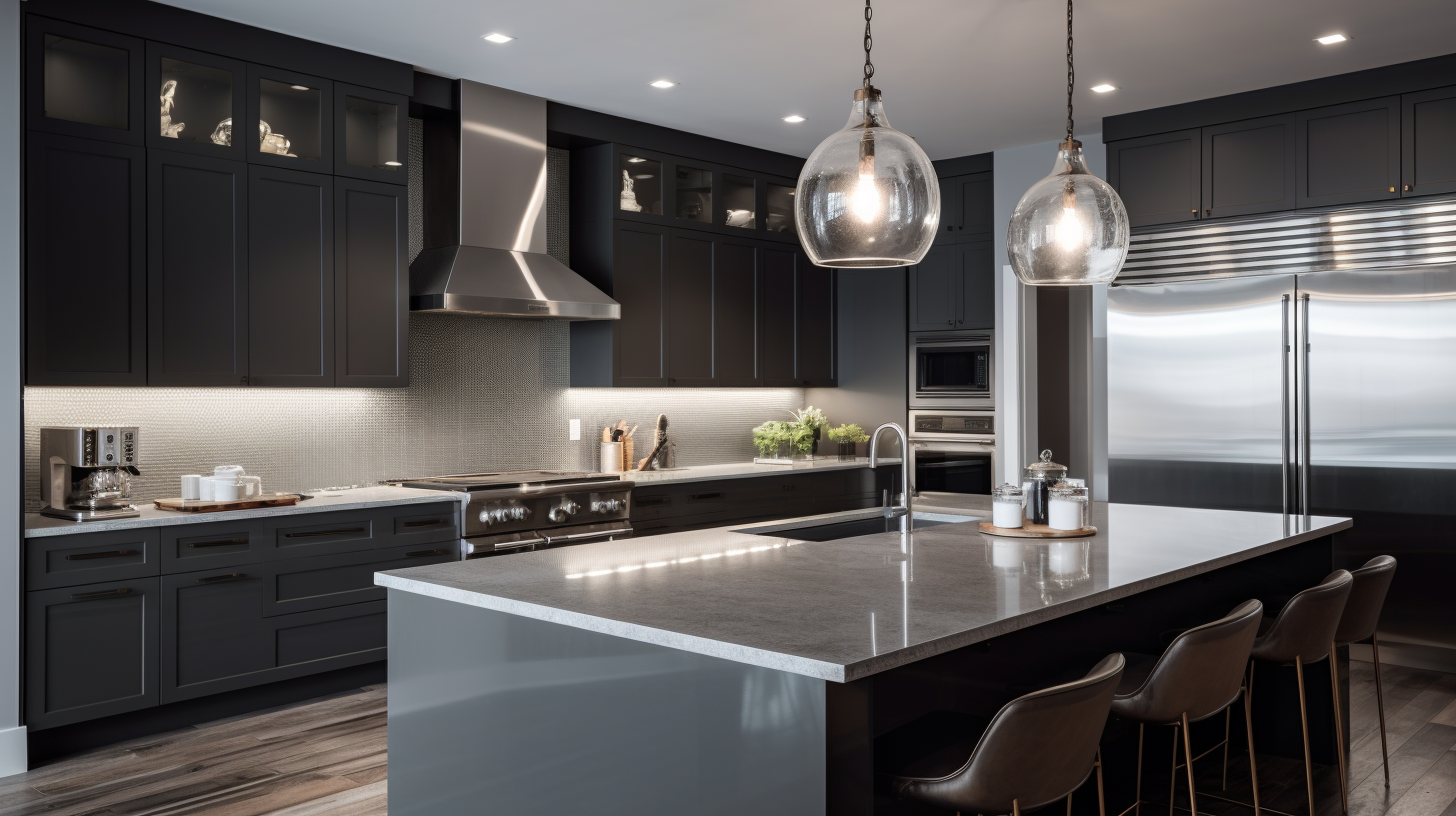
Innovative and strategic lighting solutions play a pivotal role in enhancing the ambiance and functionality of a well-designed space, as they can dramatically transform the overall atmosphere and highlight the chosen materials and finishes.
By incorporating creative lighting solutions in a white and grey kitchen, one can further emphasise the contemporary and elegant design elements while maintaining the desired balance between form and function. To achieve this, it is essential to consider various lighting types, such as ambient, task, and accent lighting, and to integrate them seamlessly into the kitchen layout.
1. Pendant lights: These versatile fixtures can provide both ambient and task lighting while adding a touch of sophistication to the kitchen. By choosing pendant lights with a sleek metallic finish, they can complement the white and grey colour palette and create a striking focal point.
2. Under-cabinet lighting: This practical solution not only enhances the functionality of the workspace but also adds depth and dimension to the grey and white cabinets. LED strip lights or puck lights can be installed discreetly under the cabinets to illuminate countertops and create a warm, inviting atmosphere.
3. Recessed ceiling lights: These subtle fixtures can be strategically placed throughout the kitchen to provide even, diffused lighting. By opting for adjustable recessed lights, one can direct the illumination towards specific areas, such as the kitchen island or dining table, ensuring adequate task lighting is available where needed.
4. Accent lighting: To showcase the beauty of the chosen materials and finishes, accent lighting can be employed to highlight architectural details, artwork, or open shelving. By integrating this type of lighting into the design, one can create a layered, dynamic lighting scheme that enhances the visual appeal of the white and grey kitchen.
Balancing Functionality and Aesthetics
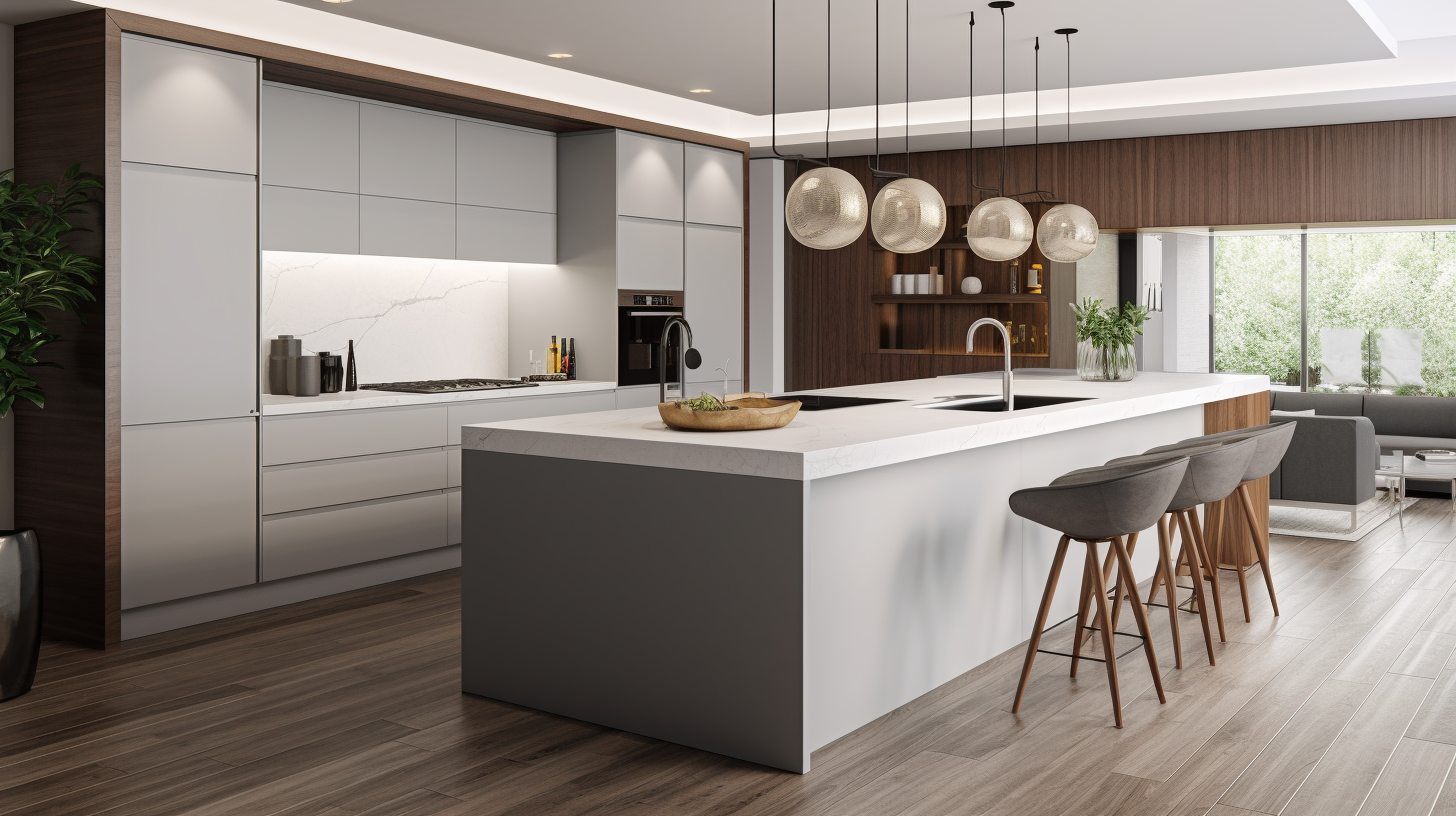
Achieving an equilibrium between practicality and visual appeal in interior design necessitates meticulous planning and thoughtful consideration of various elements, ensuring a harmonious and efficient living space.
In the context of white and grey kitchen ideas, this balance can be achieved by carefully selecting materials, finishes, and storage solutions that complement the colour scheme while enhancing the functionality of the space.
For instance, using durable and easy-to-clean materials such as quartz or granite for countertops, stainless steel appliances, and laminate or glass-fronted cabinets contribute not only to the aesthetic value but also to the practicality of the kitchen.
Incorporating ergonomic principles into the design process is another vital aspect of balancing functionality and aesthetics in a white and grey kitchen.
This includes optimising the layout and workflow by adhering to the kitchen work triangle concept, which involves strategically placing the sink, stove, and refrigerator in a triangular configuration for ease of movement and efficient food preparation.
Additionally, the choice of hardware, such as handles and knobs, should be both visually appealing and comfortable to use.
Ultimately, achieving this delicate balance between functionality and aesthetics requires a comprehensive understanding of the homeowners’ needs and preferences, enabling the creation of a kitchen that is not only visually stunning but also highly practical and user-friendly.
Adding Personal Touches and Decorative Elements
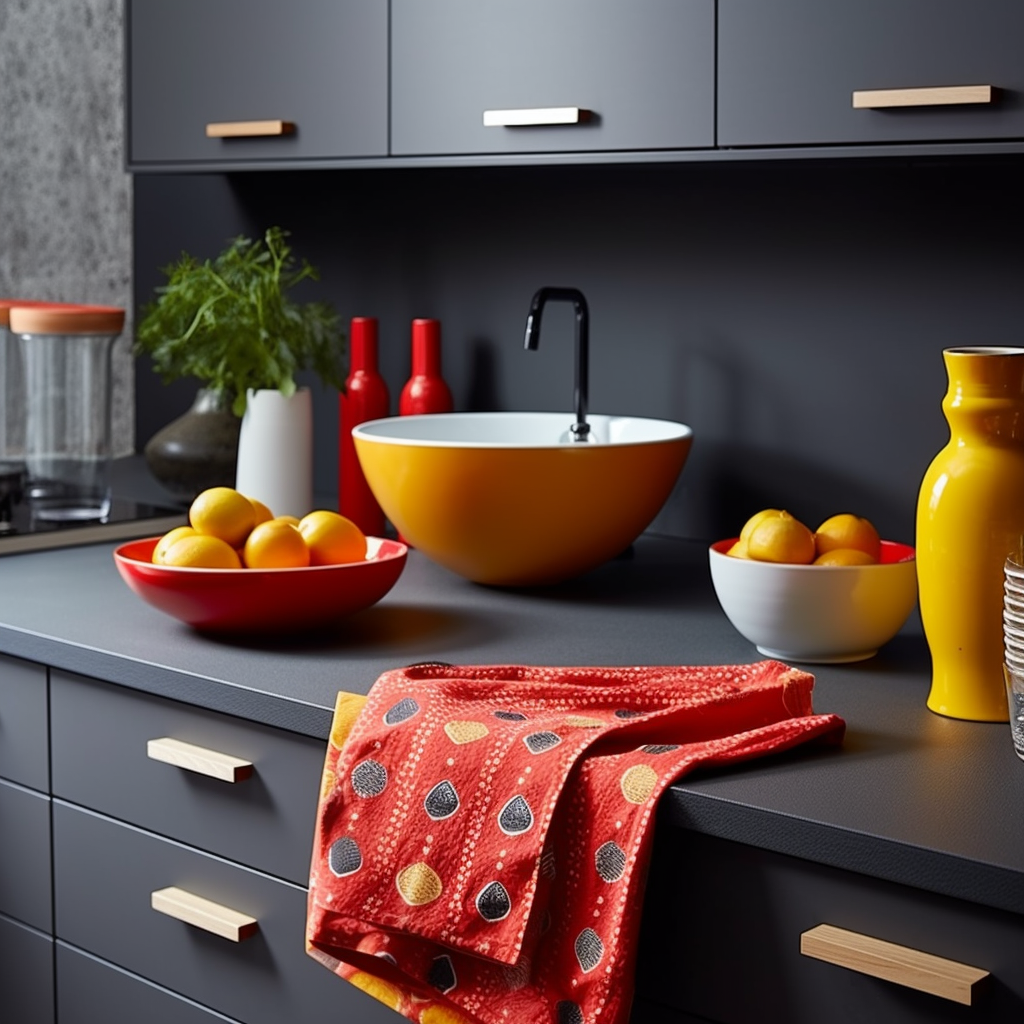
Incorporating individualistic elements and distinctive decorations can significantly contribute to the overall ambiance and character of a well-designed interior space.
One effective approach to personalising a white and grey kitchen is by carefully selecting and incorporating decorative elements that reflect the homeowner’s personality, taste, and interests. These elements can include a variety of items such as unique kitchenware, artwork, or even furniture pieces that serve as focal points or conversation starters.
Additionally, adding pops of colour through smaller decorative items, textiles, or accent walls can help to break up the monochromatic colour scheme and create visual interest within the space.
Another key aspect to consider when adding personal touches to a white and grey kitchen is the careful selection of materials, textures, and patterns. For instance, incorporating natural materials such as wood or stone can add warmth and contrast to the otherwise neutral colour palette.
This can be achieved through the integration of wooden countertops, open shelving, or even a rustic, reclaimed wood dining table. Similarly, the addition of patterned backsplash tiles or intricately designed floor tiles can introduce visual depth and create a sense of cohesion throughout the space.
Ultimately, a well-curated combination of personal touches and decorative elements can help transform a white and grey kitchen into a welcoming, engaging, and uniquely reflective living space.
Conclusion
In conclusion, the successful implementation of a white and grey kitchen design necessitates a meticulous approach in selecting colour combinations, materials, finishes, and lighting solutions. Striking a balance between functionality and aesthetics is crucial to achieving an appealing and practical space.
Moreover, incorporating personal touches and decorative elements enables individuals to create a distinctive kitchen environment tailored to their preferences.
Ultimately, a white and grey kitchen can serve as a timeless and versatile backdrop for various design styles and preferences, resulting in a functional and visually appealing space.

